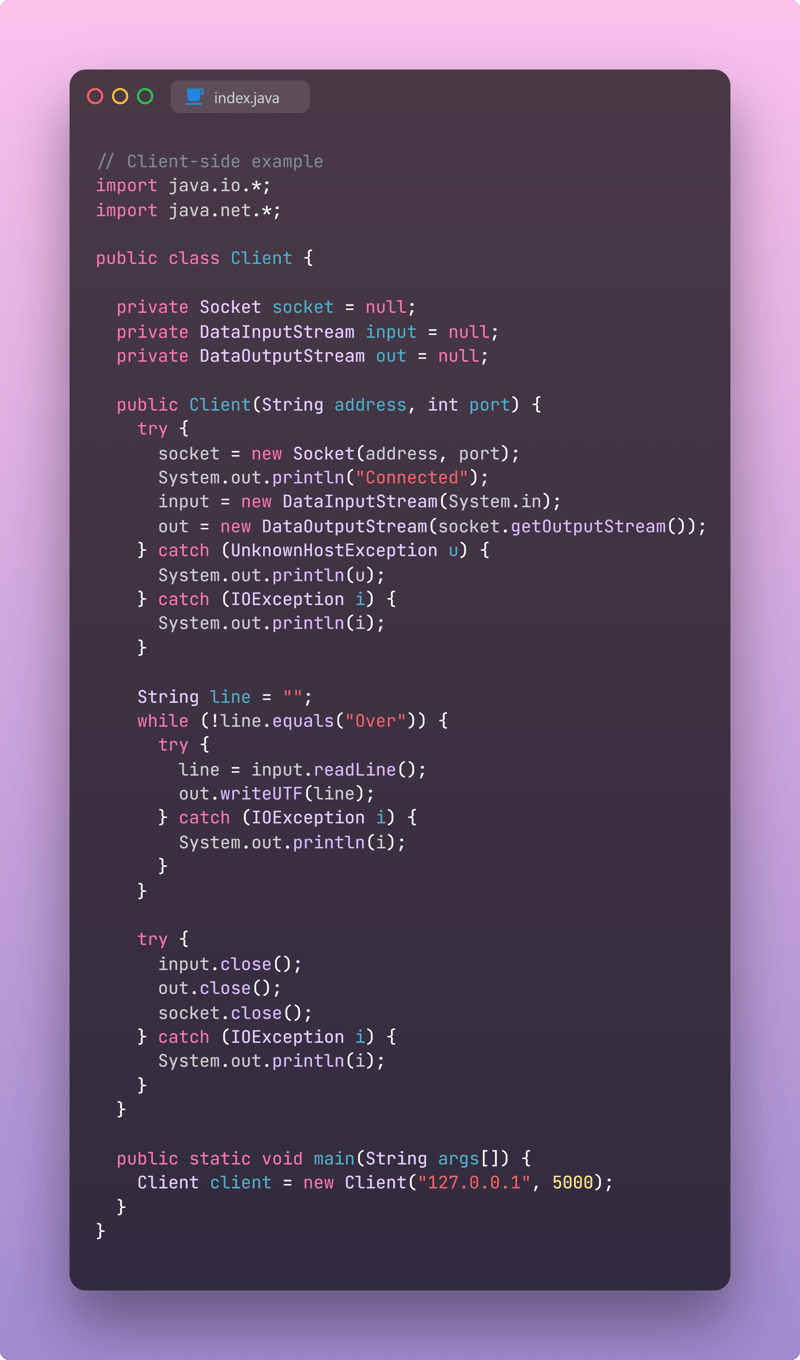dev-resources.site
for different kinds of informations.
Unraveling the Mysteries of Sockets, Files, and Streams in Java
Java, a versatile and widely-used programming language, offers a rich API for handling I/O operations through its Sockets, Files, and Streams. Inspired by the practical insights from “The Java Workshop,” let’s dive into the world of network and file I/O in Java.
Sockets: The Gateway to Network Communication
Sockets provide a means for both server and client applications to communicate over a network. In Java, the java.net.Socket class is the gateway to this fascinating world of inter-process communication.
Here’s a basic example of a client-server communication using sockets:
Files: The Cornerstone of Data Storage
Java’s file handling capabilities are robust and allow for seamless reading and writing operations. The java.io.File class represents a file or directory path and provides methods to inspect and modify file properties.
Streams: The Flow of Data
Streams in Java are the backbone of I/O operations. They are used to read from or write to a source, which could be a file, an array, a peripheral device, or a socket. The InputStream and OutputStream classes form the basis of Java’s stream hierarchy.
Here’s how you can use streams to read and write data:
Conclusion
Understanding and utilizing Sockets, Files, and Streams are fundamental to Java programming. By mastering these concepts, you can build efficient and scalable applications that interact with the world around them. For a deeper exploration, “The Java Workshop” is an excellent resource that provides a hands-on approach to learning Java.
Featured ones:


